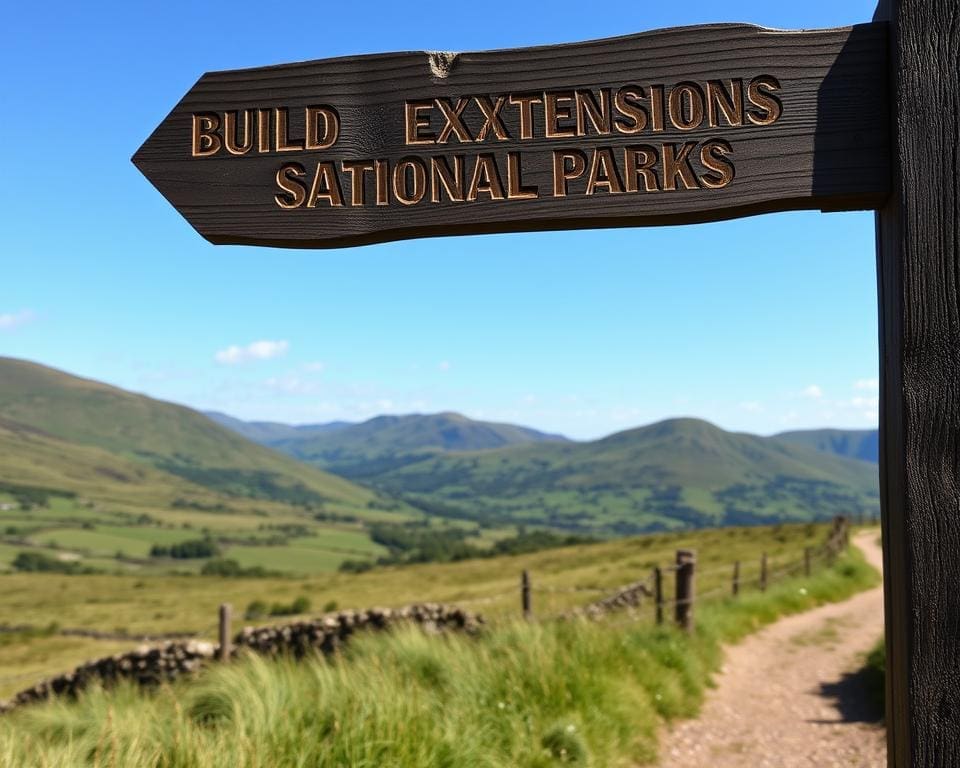Extending property within the stunning landscapes of Scottish National Parks presents a unique opportunity that is both exciting and challenging. These areas are not only breathtaking but also hold significant ecological and cultural importance. As such, the rules for extensions in Scottish National Parks are designed to protect the environment while accommodating the aspirations of property owners. It is crucial to navigate these Scottish National Parks extensions rules carefully, ensuring that any development aligns with conservation principles and enhances rather than detracts from the natural beauty of these cherished spaces.
Understanding Scottish National Parks
Scottish National Parks showcase some of the most breathtaking landscapes in the United Kingdom. The national parks overview reveals diverse ecosystems and a rich array of wildlife. These areas not only serve as sanctuaries for various species but also offer a plethora of outdoor activities, allowing visitors to connect with nature.
Overview of Scottish National Parks
Spanning rugged mountains, serene lochs, and expansive woodlands, the Scottish National Parks exemplify the country’s natural beauty. The parks are designed to protect unique landscapes and biodiversity. Visitors can explore these areas through hiking, cycling, and wildlife watching, all while immersing themselves in the stunning surroundings.
Importance of Conservation in National Parks
The importance of conservation in these parks cannot be overstated. Preserving the ecological integrity of these regions is crucial for the survival of various flora and fauna. Conservation efforts aim to enhance the natural habitat, ensuring that the delicate balance of ecosystems remains intact. Implementing a Visitor Management Strategy helps mitigate the impact of tourism, allowing for sustainable enjoyment of these incredible spaces.

What are rules for extensions in Scottish National Parks?
Extensions within the context of Scottish National Parks refer to any additional structures or modifications made to existing buildings. This can encompass a variety of forms, ranging from single-storey additions and conservatories to more intricate designs that enhance the original architecture. Understanding the rules for extensions in Scottish National Parks is essential for property owners who wish to enhance their homes while respecting the natural and cultural landscapes surrounding them.
Definition of Extensions in the Context of National Parks
Extensions are primarily characterised by their physical enlargement or modification of an existing building. In Scottish National Parks, these extensions must align with established conservation objectives. The addition should not disrupt the visual harmony of the surrounding area or negatively impact local wildlife habitats. Additionally, each potential extension must consider the unique characteristics of the Scottish landscape, ensuring that it complements rather than detracts from the park’s natural beauty.
Key Considerations for Property Extensions
When contemplating extensions, homeowners should keep in mind several key considerations for extensions. These include:
- Assessment of the existing topography to determine how the extension will integrate with the land.
- Focus on maintaining the aesthetic value of both the property and the surrounding environment.
- Adherence to local planning and environmental regulations that safeguard the park’s integrity.
- Ensuring that the materials used for construction echo the traditional styles seen within the park.
Scottish National Parks Planning Permissions
Securing the necessary permissions is vital for those looking to extend their property within the Scottish National Parks. Understanding the types of permissions required and navigating the application process for extensions can ensure compliance with local regulations while respecting the natural beauty of these protected areas.
Types of Planning Permissions Required
Before embarking on any extension project, it is essential to determine the specific Scottish National Parks planning permissions needed. These permissions may vary based on the nature and scale of the proposed development. Homeowners typically require the following:
- Full Planning Permission: This is necessary for significant alterations or extensions that substantially change the structure of the property.
- Permitted Development Rights: In some cases, smaller projects may fall under permitted development, allowing for certain types of extensions without the need for full applications.
- Listed Building Consent: Properties that are listed may require additional permissions to ensure that the historical integrity is maintained.
Application Process for Extensions
Engaging in the application process for extensions can be daunting, yet understanding the steps involved can simplify this complexity. The typical process includes:
- Research local guidelines to identify requirements specific to the national park.
- Prepare necessary documentation, including architectural plans and environmental assessments.
- Submit the application to the local authority, ensuring compliance with any deadlines.
- Engage with local planning authorities to clarify expectations and receive feedback throughout the review process.
Scottish National Parks Building Extensions Guidelines
Building extensions within Scottish National Parks requires careful consideration of both architectural and aesthetic elements. Adhering to the Scottish National Parks building extensions guidelines ensures that new developments harmonise with the natural landscape, maintaining the integrity and beauty of these protected sites. This section explores the essential architectural requirements and materials standards that developers must follow.
Architectural Requirements to Follow
Extensions should reflect the traditional Scottish styles prevalent in the area. This promotes a sense of continuity and respect for the local heritage. Key aspects of architectural requirements include:
- Proportions that complement existing structures.
- Use of local aesthetics to ensure visual harmony.
- Consideration of scale, avoiding overwhelming the surrounding environment.
Materials and Aesthetic Standards
Choosing the right materials is crucial for complying with materials standards set forth in the guidelines. Sustainable and local materials are encouraged, as they contribute to a lower environmental impact. Important points to remember include:
- Utilising stone, timber, and slate that reflect traditional craftsmanship.
- Ensuring that finishes are in keeping with the surrounding landscapes.
- Incorporating energy-efficient solutions while respecting ecological balance.
Scottish National Parks Development Restrictions
Development within Scottish National Parks encounters a complex framework of restrictions designed to protect the unique environments that these areas encompass. Understanding these regulations is crucial for anyone considering alterations or construction within these protected landscapes.
Common Restrictions in Place
Various factors contribute to the Scottish National Parks development restrictions, aimed at maintaining the natural beauty and ecological integrity of these regions. Common restrictions include:
- Limits on building height to preserve views and vistas.
- Specifications for materials to ensure structures blend harmoniously with their surroundings.
- Restrictions on land use types, often prohibiting industrial activity in favour of preserving natural habitats.
Impact of Environmental Concerns on Development
Environmental concerns play a significant role in shaping development policies within Scottish National Parks. Elements such as habitat preservation and landscape protection are paramount. For example, proposals that may threaten the viability of local wildlife or disrupt historical landscapes typically face rigorous scrutiny. Each application is meticulously assessed to ensure that development does not compromise the ecological balance.
Case studies abound where developments have been denied based on potential environmental harm, reflecting the commitment to conservation that underpins these national treasures. Awareness of and compliance with these restrictions is essential for maintaining the delicate equilibrium of these cherished environments.
Regulations for Extensions in Scottish National Parks
Understanding the regulations for extensions in Scottish National Parks involves delving into the legal framework that governs such developments. These regulations are designed to ensure that any alterations respect the unique environments of these protected areas, balancing development with conservation. The significance of local authority oversight cannot be overstated, as it plays a crucial role in maintaining the ecological integrity and aesthetic value of the parks.
Legal Framework Governing Extensions
The legal framework surrounding extensions in Scottish National Parks encompasses a variety of laws and policies. The Planning (Listed Buildings and Conservation Areas) (Scotland) Act plays a pivotal role, providing guidelines on how alterations should be approached in sensitive environments. This legislation ensures that developments do not compromise the parks’ natural beauty and cultural heritage. Furthermore, national policies established by bodies such as NatureScot outline objectives for sustainable development and conservation. Compliance with these laws is essential to maintain the ecological standards set forth for these treasured landscapes.
Local Authority Involvement and Oversight
Local authorities exercise important oversight within the framework of regulations for extensions in Scottish National Parks. They are responsible for assessing applications and ensuring that proposed developments align with both local and national guidelines. This oversight includes evaluating the potential impacts on wildlife, landscapes, and cultural resources. Non-compliance can lead to significant legal repercussions, reinforcing the local councils’ authority in managing these areas. Their expertise is vital in preserving the unique character of each national park while allowing for necessary developments that meet community needs.
Scottish National Parks Conservation Rules
The Scottish National Parks conservation rules serve a vital role in safeguarding the natural beauty and biodiversity that these majestic areas are known for. These regulations ensure that any property extensions align with the overarching aim of preserving the unique ecosystems that thrive within the parks. As a developer, being mindful of these rules is essential in crafting projects that contribute positively to the environment while enhancing the local community’s character.
Incorporating Scottish National Parks conservation rules into your extension plans not only demonstrates a commitment to sustainable development but also respects the delicate balance of the landscapes and wildlife. By aligning construction practices with conservation efforts, developers can play a part in protecting habitats that are critical for various species, ensuring these areas remain vibrant for future generations to enjoy.
Ultimately, it is crucial for prospective developers to engage deeply with Scottish National Parks conservation rules, considering how their projects can harmonise with the natural surroundings. By adopting an approach that respects conservation principles, all involved can contribute to the ecological health of the parks while celebrating the Scottish heritage that makes these national treasures so special.









